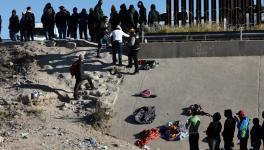Modern-Day Slavery in Mexico and the United States
Human Trafficking
Human trafficking is the fastest growing illegal industry in the world and, by 2010, it is predicted to surpass the illicit drug trade, which will make it the world’s largest criminal activity. The United Nations defines human trafficking as “the recruitment, transportation, transfer, harbouring or receipt of persons, by means of the threat or use of force or other forms of coercion, of abduction, of fraud, of deception, […] for the purpose of exploitation.” A common misconception is that an individual must cross international borders to be considered a victim of human trafficking; however, as evidenced by the United Nations’s definition, this is not always the case.
According to the United Nations, human trafficking generates an estimated $32 billion in revenue each year. According to a State Department estimate, between 600,000 and 800,000 individuals are trafficked annually, with women and children especially being targeted. The State Department estimates that 70 percent of trafficking victims are female and that nearly 50 percent of the victims are younger than 18. Moreover, according to the International Labor Organization (ILO), of the 12.3 million people who are currently subjected to forced labor, bonded labor, or the commercial sex industry, 2.4 million have been trafficked. Of these, 80 percent are used for sexual exploitation while the remaining victims are forced to labor on farms or in factories.
Get the latest reports & analysis with people's perspective on Protests, movements & deep analytical videos, discussions of the current affairs in your Telegram app. Subscribe to NewsClick's Telegram channel & get Real-Time updates on stories, as they get published on our website.






















